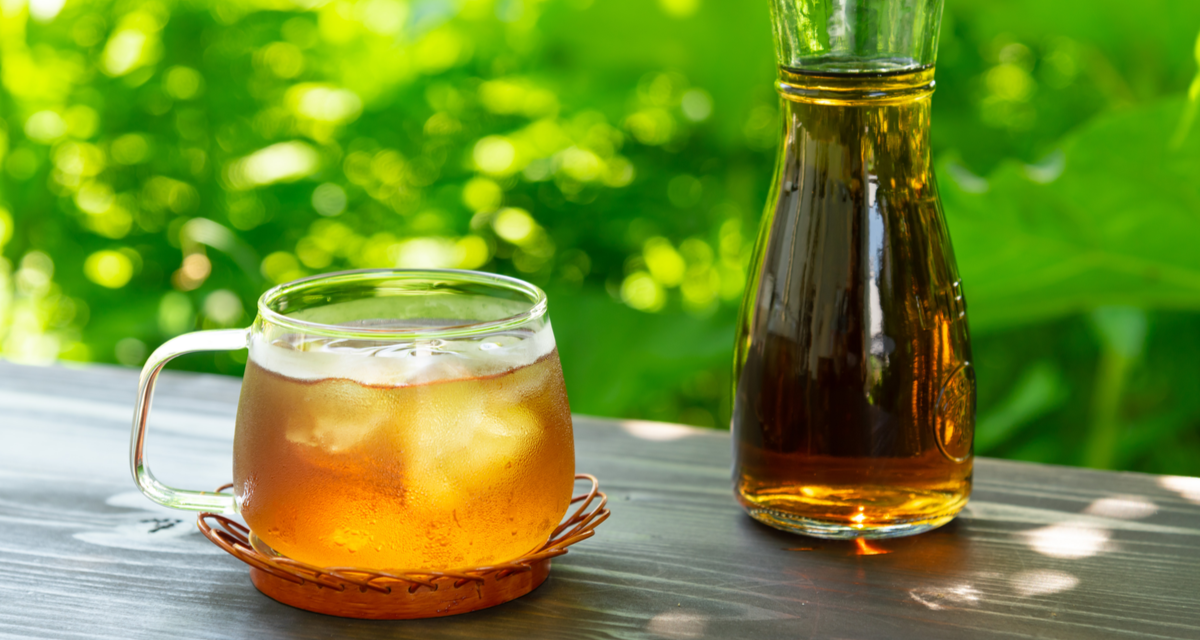What do you imagine when you think of Japanese tea? Most likely piping hot tea brewed in cast-iron kettles and served in delicate ceramic teacups. Maybe the tea drinkers are dressed in elegant kimonos in a Zen-like garden paradise. It’s no wonder that this comes to mind, since Japan has a rich hot tea history spanning several centuries. While the tradition of hot tea is undoubtedly a part of Japanese culture, Japan’s iced tea culture is equally fascinating. In fact, iced tea, chilled tea, and cold-brewed teas are the gold standard for most, and they prove to be staples in the lives of modern Japanese people.
Iced barley tea in daily life
Just how ingrained is iced tea in modern Japanese culture?
For starters, chilled bottled teas are usually consumed in place of water
throughout the day. You’ll see students pair their bento box lunches with
refreshing iced tea. In business meetings, iced tea is offered as an option to
guests who have come a long way and need to rehydrate. On the subway, you might
catch a businessman downing a bottle of iced tea, the preferred choice for busy
people on the go. It’s never out of reach, since you can easily find a chilled
tea bottle at a convenience store, supermarket, or vending machine.
How to make Japanese iced barley tea?
Iced barley tea or mugi cha is a particular favorite in hot and humid summers, due to its cooling effect. It is distinguished by its mild nutty taste and crisp aroma. But the world of iced barley tea goes beyond vending machines. People of all ages brew their own chilled version at home through the highly popular mizudashi or cold brew method. In this method, loose barley tea leaves are mixed with cold water and refrigerated overnight, before straining the final product of the tea leaves. It is easy to make, easy to store, and easy to brew in large quantities.
Perhaps an even more sophisticated way to enjoy barley tea
is through the koridashi or ice brew method. In this method, loose
barley tea leaves are combined with a jar or pot full of ice cubes. The ice
thaws naturally until it completely melts to room temperature. The result is a
bold umami-flavored brew, which can be made lighter by adding more ice to it.
Iced tea without sugar or sweeteners
A stereotype of iced tea in the west is that it needs
tablespoon upon tablespoon of sugar to taste bearable. This couldn’t be farther
from the truth with Japanese iced barley teas. The advantage of cold brewing and
ice brewing methods is that they curb astringency to yield a more nuanced
flavor, making iced barley tea an attractive option for even sweet tooths and
young children to look forward to on a hot summer day. Never too bitter and certainly
never too sweet, iced barley tea is the real-deal and is always drank straight
as is. It never requires sweeteners, lemon or flavoring to “mask” an unpleasant
aftertaste.
Intrigued by the world of Japanese iced tea, or even iced
barley tea? Experience it for yourself with Juroku Cha, now available on Amazon.
Juroku Cha is a blend of sixteen grains and botanicals, including the famous
barley tea.
Want to know more about modern Japanese tea
culture? Stay tuned for our upcoming post on Juroku Cha pairings with Japanese
shochu.
